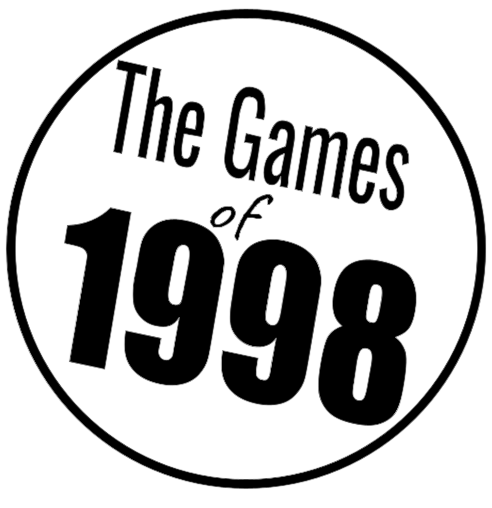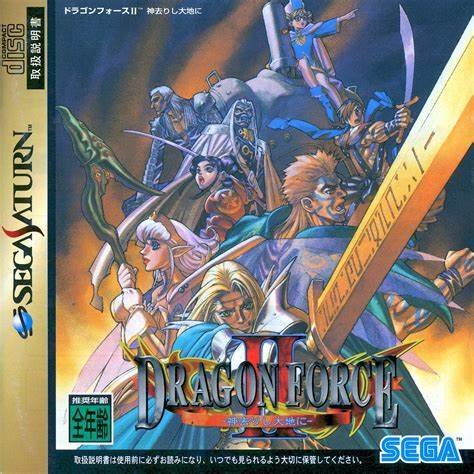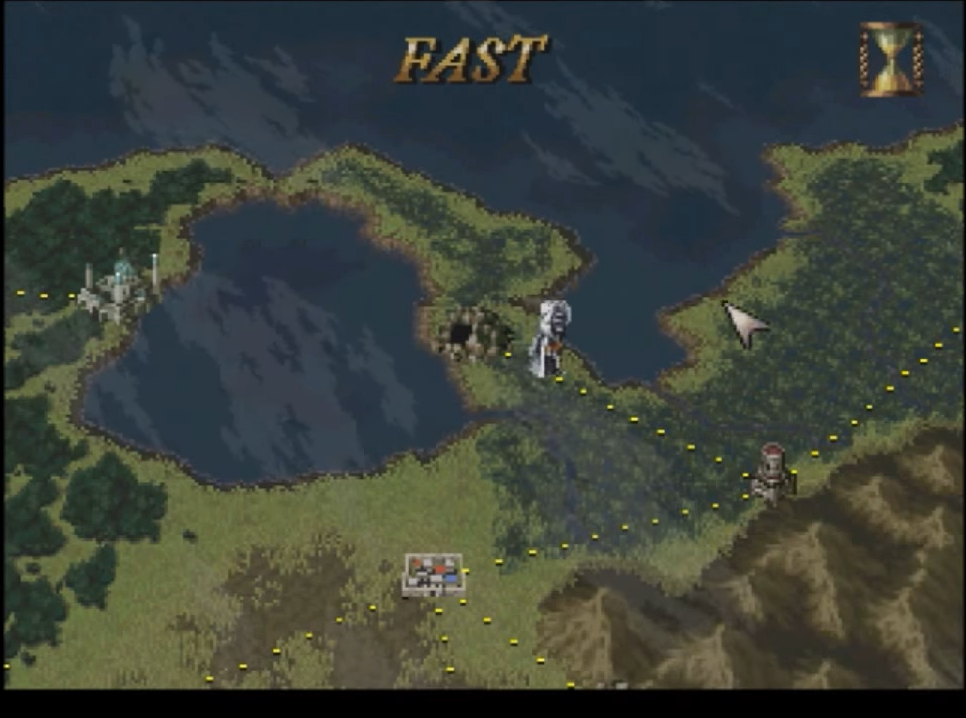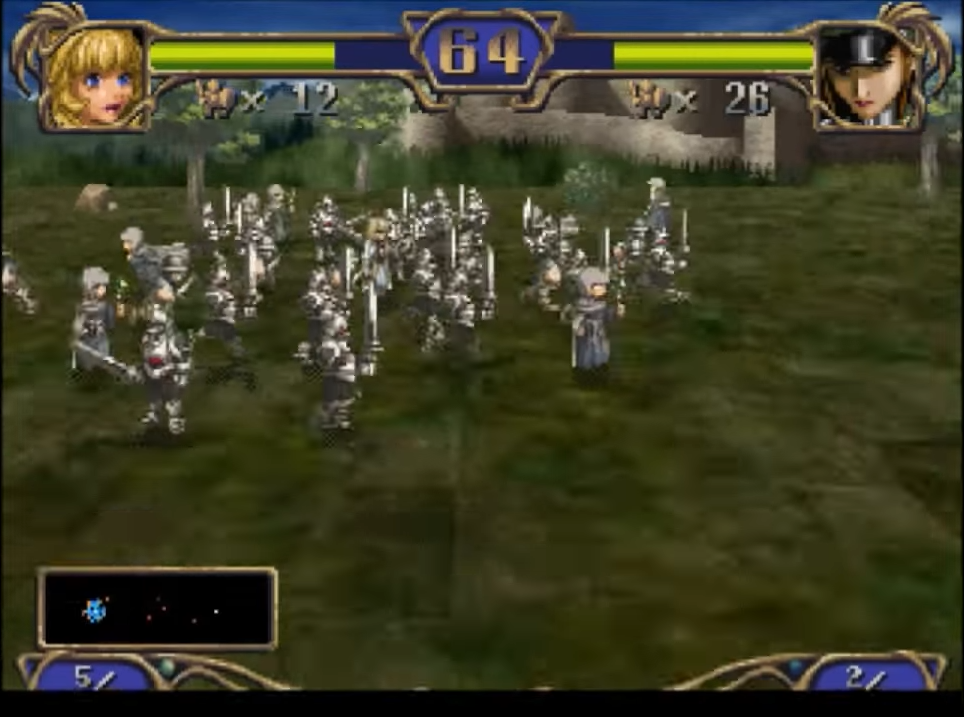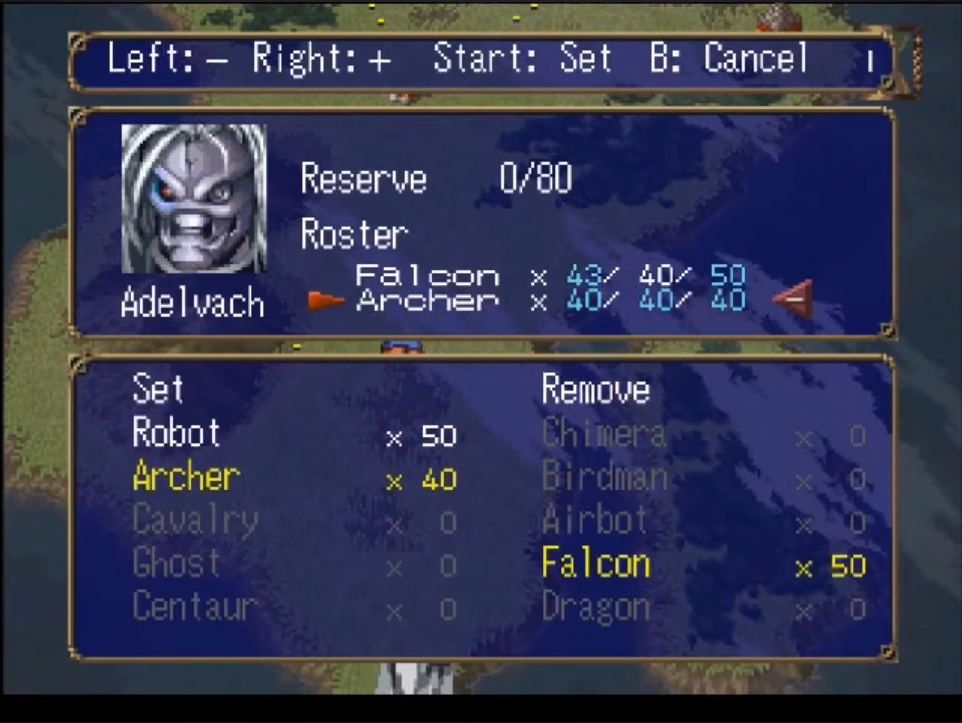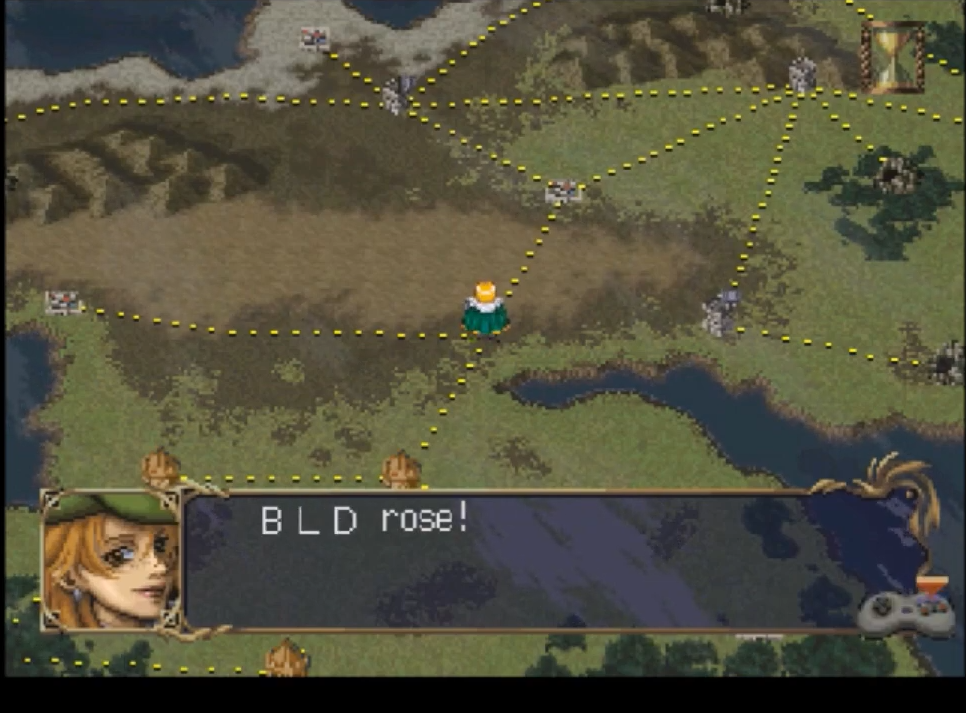Dragon Force II: This Godforsaken Land
Release Date - April 2, 1998 (JP)
Developer - Sega
Publisher - Sega
Platform - Sega Saturn
The land of Legendria is once again in peril. Huge armies will cross the country in the name of conquest and fulfilling prophecies, alliances will be formed and shattered, and the mettle of every leader and their kingdom will be tested!
Dragon Force II: Kamisarishi Daichi ni (the sub-title roughly translates to This Godforsaken Land) is the followup to the much loved strategy/RPG hybrid Dragon Force, which was originally released on Sega Saturn in 1996. Dragon Force II doesn’t stray very far from the winning formula of the first game and is a return to the beloved mix of grand strategy, kingdom management and RPG character building.
The battles are definitely the centrepiece of Dragon Force II, but they only make up a portion of what the game has to offer.
(all screenshots taken from https://www.youtube.com/@ProDaKah)
Dragon Force as a series is recognised for its amazing large scale battles, far bigger than the likes ever seen in an RPG on home consoles. Up to two hundred soldiers can clash on the battlefield, a true showcase of the Sega Saturn’s much vaunted 2D graphical capabilities with an obscene amount of sprites on screen at any given time.
More than just a technical showcase, the game has a lovely dark-fantasy art-style with a compelling world to explore. The aesthetics are perhaps a little darker than the first game, but retains that high-fantasy setting. Character designs are extremely varied and fun, and the individual troops that make up each army are usually identical to each other but each sprite is lovingly detailed and animated.
Players take on the role of one of several different characters, each of which is the leader to their faction. Each faction has its own starting position in the land of Legendria, their own specialty in units and their own suite of generals with which to lead armies. While the faction leader is the most important character (and at least to start out with, the most powerful), the generals are all key to your campaign and have their own traits that must be exploited to find victory (some may be very powerful in melee combat, whereas others may have access to powerful spells for example). It makes every playthrough unique and a different challenge.
Choosing a general and unit type to counter your enemy is a very important decision. Your line-up will be the difference between victory and defeat.
The gameplay takes place in three different stages; Kingdom Management, the Strategic Map and the Battle Phase. Kingdom Management is where you’ll be making the important decisions regarding your budding empire. You can also interrogate prisoners, assign weapons and items from your armoury to your generals as well as promote your generals to improve their abilities and allow them to command higher numbers of troops into battles. New to Dragon Force II is also the laboratory. Heading to the lab will let you craft new and powerful items from components.
Through interrogation of captured enemies or via searching your newly conquered lands, you can even recruit new generals to join your cause, greatly boosting the effectiveness of your army! This becomes essential in the later game as you must defend a lot of borders as your empire grows, so you’ll naturally need bigger armies and more of them.
Travelling the map means keeping an eye out for enemy patrols and potential invasions.
On the Strategic Map, the game will run in real time as you position your generals and move them to various provinces and settlements. Generals can be sent to reinforce and occupy your own strongholds, or to attack enemy lands to conquer them. Keep an eye on the movements of your troops, as the other factions will be moving as well. If your armies meet another faction’s force on the map, a battle will commence! The fact this all takes place in real time means you must be ready to react and change plans, positioning your generals to different areas as emergencies arise. It quickly becomes a struggle to react to enemy manoeuvres while still trying to put together your long term strategic goals.
Generals are often very capable fighters, so being outnumbered by troops isn’t good, but not a game-losing scenario.
When you do initiate a battle, or find yourself under attack from an enemy army, you will be transported to the Battle Phase. This is where you get to enjoy the lavish backdrops and impressive large scale battles! Before going onto the field of battle however, you have an opportunity to choose which general will meet the enemy first. This can be an incredibly important choice, as each general will be fielding different units. Every unit type has their own set of counters and in turn will have varying levels of effectiveness against other unit types. There are a whopping 18 different types of unit to field (more than the original Dragon Force), so it pays to learn their ins and outs. For example, cavalry will be very strong against archers, but archers will easily wipe out an army of flying enemies! Send out the wrong general and you risk losing huge numbers of units. Send out the right general, and you can win battles even when grossly outnumbered! In a new feature for Dragon Force II, generals can now actually field two different types of units! In the first game each general could only field one type at any given time. Now there are more combinations and opportunities for counters and fielding a balanced army. Once you have decided on which army to field, the game goes to the battlefield where you and the enemy will set unit formations and a general strategy for your troops. While your soldiers will automatically engage with the enemy with either melee or projectile attacks, generals can make use of their special abilities as well.
‘You fight like a dairy farmer!’
Battles will very often end up in a duel between generals.
These can be magic attacks that can damage lots of enemy troops, special attacks to target the enemy general, or even things like calling in reinforcements or blocking the enemy general’s ability to use their own special attacks. Special moves have limited use and a long cool down recovery period, so careful selection is required! The battle ends when either side calls for a retreat, or one of the generals is defeated in combat. If all the troops are wiped out from both armies, the battle goes to a duel between generals! This is where strong fighters will have a huge advantage over generals who are more magic or support focused. Sometimes a hasty retreat is the best option available!
In between battles, it’s very important to refine your army composition and replenish your troops.
Much like the first game, each faction and leader has their own story to to uncover, and rivalries to be settled with other characters. With each leader having a sizeable campaign to play through and multiple leaders to play as, Dragon Force II packs in a lot of content. Some factions are more likely to field certain types of units, and have their own unique generals, meaning that players will want to play through the game multiple times to see what each play-through has to offer. The story is presented with care, with many fully voiced pieces of dialogue and some beautiful character art conveying the mystery of Legendria.
Unfortunately, Dragon Force II would never see the light of day outside of Japan. By 1998, the retail market for the Sega Saturn had shrunk considerably, and Sega was beginning to focus on the Dreamcast launch. A relatively niche game like Dragon Force II with copious amounts of translation work required stood little chance unfortunately. The game lived on with translations being provided online, and more recently even fan-created full translation patches! There has never been a better time to rediscover this classic that was lost to Western Sega fans than now, can you unify the land of Legendria once more?
As you can see from the screens on this page, you can play Dragon Force II in English right now! Don’t miss out on this fantastic gem for Sega Saturn!
